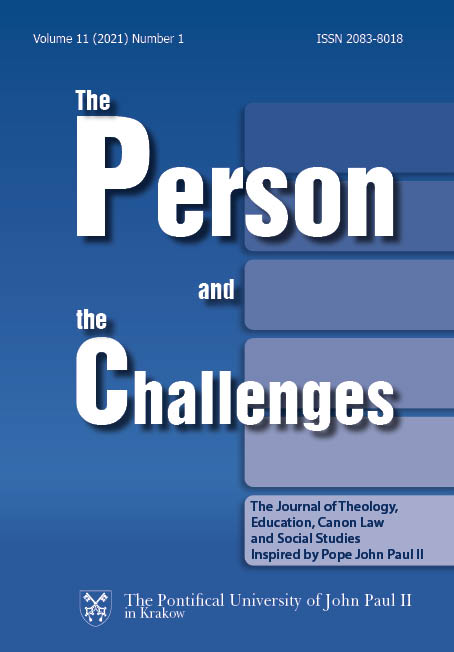The Process of Creating a Digital Communication Model for the Vatican
DOI:
https://doi.org/10.15633/pch.3887Keywords:
Digital communication, Internet, IT, social communication, social studies, VaticanAbstract
In 1978, in the Holy See, all communication took place thanks to the analogue technology of text, sound and image recording. In the following years, the progress in computer science, made it possible to save any kind of data in the form of digital recording, so that one could collect data and transfer it to any place in an instant. Digitalization also allowed the Vatican to create a new model of communication with the modern world. This model was first based on the capabilities of computer networks and then on the Internet. It was first tested by the Holy See in Latin America. The experience of the Latin American Church’s Computer Network (RIIAL) was transferred to the Vatican, and then developed and proposed by John Paul II to the entire Universal Church. This model of digital communication would not have been possible without collaborators such as John Patrick Foley, Judith Zoebelein, Joaquin Navarro-Valls and a group of lay Catholics and clergy from Latin America. It was thanks to them that the Holy See began to communicate digitally through the World Wide Web and to use e-mail in a relatively short time since their invention. The present analysis concerns the creation of a digital model of communication during the pontificate of John Paul II (1978–2005).The inclusion of social media in the communication model of the Vatican, took place during the successors of the Pope from Poland.
References
Campbell H. A., Vitullo A., Popes in Digital Era. Reflecting on the Rise of the Digital Papacy, „Problemi dell’informazione” 3 (2019), pp. 419–442.
Campbell H., Preface, in: Arasa D., Cantoni L., Ruiz L. A. (eds.), Religious Internet Communication. Facts, Trends and Experiences in the Catholic Church, Rome 2010, pp. 9–11.
Foley J. P., Internet Gives New Meaning to «Deus ex Machina», https://zenit.org/2001/06/07/archbishop-foley-s-address-for-communications-day/ (5.07.2020).
Foley J. P., Una Red Informática de la Iglesia: Identidad y desafíos, https://www.es.catholic.net/op/articulos/6180/cat/363/una-red-informatica-de-la-iglesia-identidad-y-desafios.html#modal (28.08.2020).
Gęsiak L., Reform of the Vatican media, a difficult search for a new path, „The Person and the Challenges” 7 (2017) 2, pp. 5–22.
Historia de la RIIAL explicada hoy, http://www.riial.org/historia-de-la-riial-la-red-informatica-de-la-iglesia/ (5.07.2020).
Hoyos D. C., El sacerdote y la informatica, https://es.catholic.net/op/articulos/6173/cat/45/el-sacerdote-y-la-informatica.html#modal (12.01.2021).
John Paul II, The Rapid Development, http://www.vatican.va/content/john-paul-ii/en/apost_letters/2005/documents/hf_jp-ii_apl_20050124_il-rapido-sviluppo.html (28.08.2020).
John Paul II, The Christian Message in a Computer Culture. Message for the 24th World Communications Day 1990, http://www.vatican.va/content/john-paul-ii/en/messages/communications/documents/hf_jp-ii_mes_24011990_world-communications-day.html (5.07.2020).
KAI, Stolica Apostolska w Internecie, https://kair.ekai.pl/depesza/23404/show?q=%-
Stolica%20Apostolska%20w%20Internecie%22 (24.07.2021).
Maaike M. A., La Santa Sede e la Comunicazione, Utrecht 2013.
Mora S., Navarro-Valls Was Able to Manage the Internet Revolution in the Vatican, https://zenit.org/2017/07/06/navarro-valls-was-able-to-manage-the-internet-revolution-in-the-vatican-says-greg-burke (26.08.2020).
Planas E., Una red informática para la comunion eclesial, https://es.catholic.net/op/articulos/20996/cat/156/horizontes-eclesiales-en-informatica.html#modal (14.01.2021).
Seeing the Spirit at work in the world, http://vision-vocation-guide.blogspot.com/2006/11/sister-judith-zoebelein-developer-of.html (16.01.2021).
Soberón M. L., Collaborative intelligence. How to make our human-sized digital key conversations for transforming organizations smarter, „Psychology and Cognitive Sciences Open Journal” 4(2) (2018), pp. 48–51.
Soberón M. L., La inteligencia conectiva en la Red Informática de la Iglesia en América Latina (RIIAL), „Signo y Pensamiento” 28 (54) (2009), pp. 300–316.
Staley T., Surf’s up. Vatican website serves as an important resource since Pope John Paul OK’d it, https://www.thecompassnews.org/compass/2003-08-22/editorial1.shtml (23.01.2021).
Storia del Dicastero per la Comunicazione, https://www.comunicazione.va/it/chi-siamo/storia.html (16.08.2020).
Trigilio J. Jr., Brighenti K., Toborowsky J., John Paul II for Dummies Special Edition, Hoboken 2015.
Valentan S., I tre Papi e la necessita degli strumenti di comunicazione sociale nella Chiesa, „Bogoslovni vestnik” 79 (2019) Nr 4, pp. 1075–1086.
Vaujany F-X. de, Between eternity and actualization. The co-evolution of the fields of communication in the Vatican, „Communications of the Association for Information Systems” 18 (2006), pp. 355–391.
Vaujany F-X. de, Conceptualizing I.S. Archetypes Through History. A Study of the Roman Curia, in: ICIS 2006 Proceedings Paper 83, pp. 1341–1356.
Ysern de Arce J. L., Elementos básicos para una pastoral de la informática y de las nuevas tecnologías de la comunicación social, Brasília 1995.
Zoebelein J., The Vatican, in: Arasa D., Cantoni L., Ruiz L. A. (eds.), Religious Internet Communication. Facts, Trends and Experiences in the Catholic Church, Rome 2010, pp. 139–144.
Downloads
Published
Issue
Section
License
Authors who publish with this journal agree to the following terms:
- Authors retain the copyright and full publishing rights without restrictions, and grant the journal right of first publication with the work simultaneously licensed under a Creative Commons Attribution 4.0 International License that allows others to share the work with an acknowledgement of the work's authorship and initial publication in this journal.
- Authors are able to enter into separate, additional contractual arrangements for the non-exclusive distribution of the journal's published version of the work (e.g., post it to an institutional repository or publish it in a book), with an acknowledgement of its initial publication in this journal.
- Authors are permitted and encouraged to post their work online (e.g., in institutional repositories or on their website) prior to and during the submission process, as it can lead to productive exchanges, as well as earlier and greater citation of published work (See The Effect of Open Access).

